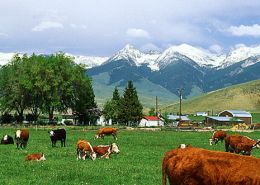Promoting Rural Livelihoods and Public Health Through Poultry Microfinance: Evidence from Lao PDR
Place: Lao PDR • Dates: 2010-2011 • Partner: FAO
Throughout Lao PDR, livestock production is one of the most important agricultural activities in rural areas especially among poor households. Livestock products provide not only much needed food or income, but also represent a crucial form of savings because livestock can readily be sold for cash in times of need. Because most rural households do not have access to traditional finance institutions where savings can be deposited, livestock provides an important and necessary risk diversification strategy. Unfortunately, savings in livestock are prone to shocks, especially from animal disease. Thus, livestock presents a savings opportunity for the rural poor, but it comes with a relative high degree of risk. This problem is compounded by the fact that producers are often unable to restock their assets after a disease incidence because of limited financial access.
The vast majority of livestock production in Lao PDR exists in a traditional, smallholder system and animals are rarely produced for market. Therefore, the Lao PDR government has created policies, including technical advice from District Agriculture and Forestry Offices (DAFOs) and interest rate subsidies on agriculture loans, to encourage producers to commercialize their livestock production. Despite these attempts, the livestock sector in Lao PDR still faces several difficulties in the transition towards commercialization including low market access rates, low levels of technology, and capital constraints.
Poultry production is the most common form of livestock production especially amongst the rural poor because the inputs of production are so low. This grants the rural poor an inexpensive, yet vital, source of protein and ancillary income. Despite the prevalence of poultry production, commercialization rates are extremely low and more than 90% of poultry producers exist in a traditional extensive system with birds produced for home consumption rather than for the market. Futhermore, outbreaks of Highly Pathogenic Avian Influenza (HPAI) have decelerated the process of commercialization and development of the poultry sector.
Microfinance presents a possible solution both to the problems of limited savings and marketing opportunities that face smallholder producers. Access to credit is an empowering tool because it provides producers an opportunity to restock their flock in the event of a disease outbreak. This in turn can allow smallholders to increase flock sizes, because the losses from disease will not be as damaging. Additionally, larger flock sizes allow producers to increase rates of commercialization, which provides more income and an opportunity for further savings. Furthermore, microcredit loans grant producers the necessary capital they need to invest in infrastructure and biosecurity, ultimately increasing product quality and value. Thus microcredit loans for poultry production are a tremendous opportunity to reduce the limitations of savings opportunities for smallholders and increase marketing rates and livelihoods. This study reviews the potential for promotion of the Lao livestock sector through microfinance programs.
Most Recent Entries

Low Carbon Biomass Conversion in the Sierra Nevada





